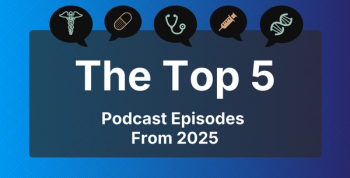
Patients With Newly Diagnosed MM Taking Twice-Weekly Ixazomib Achieve High ORR
Ixazomib taken twice weekly with lenalidomide and dexamethasone resulted in high overall response rate (ORR) and a durable response among patients with newly diagnosed multiple myeloma (MM).
Patients with newly diagnosed multiple myeloma (NDMM) who received the oral proteasome inhibitor ixazomib twice weekly with lenalidomide-dexamethasone (Rd) had a high overall response rate. Furthermore, responses to treatment were long lasting, according to the results of a phase 1/2 study
While multiple myeloma remains incurable, treatment advances have led to improvements in progression-free and overall survival. As a result, the disease “is becoming more of a chronic condition for many patients, with increasing 10-year survival rates,” the authors explained. “An associated development is that treatment strategies are substantially moving towards continuous, long-term therapeutic approaches, which have been shown to improve patient outcomes compared with fixed-duration therapy options.”
The first phase of the study tested 3.7 mg and 3 mg ixazomib. The researchers determined that 3.7 mg was the maximum tolerated dose for twice-weekly ixazomib-Rd, but the phase 2 part of the study used 3 mg based on overall tolerability across multiple cycles. The study enrolled 64 patients with NDMM to receive treatment for up to sixteen 21-day cycles. Patients received ixazomib on days 1, 4, 8, and 11 of the cycle in combination with 25 mg lenalidomide on days 1 to 14 and 20 mg dexamethasone on days 1, 2, 4, 5, 8, 9, 11, and 12. Patients who completed all 16 cycles were then given single-agent ixazomib twice a week. A total of 28% of patients proceeded to maintenance.
The researchers found that the confirmed overall response rate was 94%, with 68% complete response plus very good partial response. The median progression-free survival was 24.9 months and the median duration of response was 36.9 months.
Only 1 patient did not experience any drug-related adverse events (AEs). The majority (89%) of patients who proceeded to maintenance and received single-agent ixazomib experienced new AEs during the maintenance period. In 66% of all patients, AEs led to dose reduction of any study drug. The most common drug-related AEs were peripheral neuropathies not elsewhere classified (NEC); fatigue; and rashes, eruptions, and exanthems NEC.
The authors noted that future studies should investigate defining a subset of patients who would benefit the most from more intensive therapy and who would be able to better tolerate it.
“We demonstrate that twice-weekly ixazomib-Rd offers substantial activity and promising outcomes in NDMM patients but appears to be associated with a somewhat higher toxicity burden than weekly ixazomib-Rd in this setting,” the authors concluded.
Reference
Richardson PG, Hofmeister CC, Rosenbaum CA, et al. Twice-weekly ixazomib in combination with lenalidomide-dexamethasone in patients with newly diagnosed multiple myeloma. Br J Haematol. 2018;182(2):231-244. doi: 10.1111/bjh.15394.
Newsletter
Stay ahead of policy, cost, and value—subscribe to AJMC for expert insights at the intersection of clinical care and health economics.








































